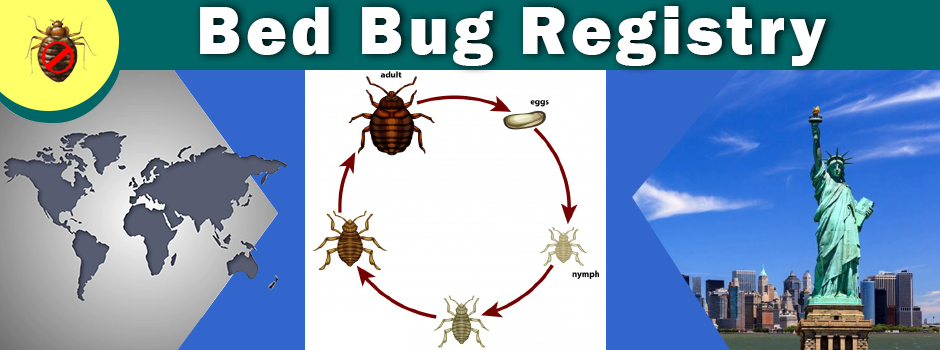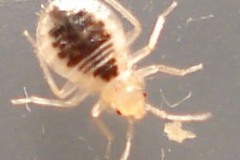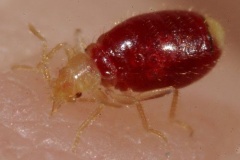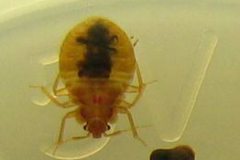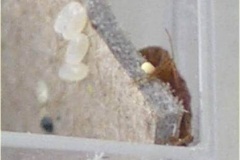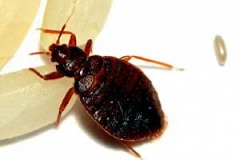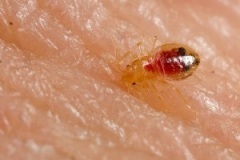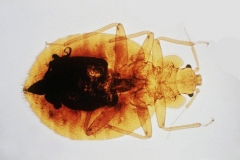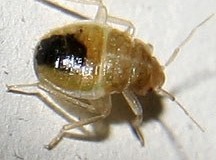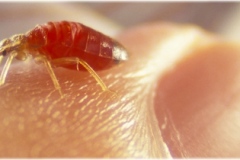Categories
- Bed Bug
- Bed Bug Cream
- BED BUG DATABASE
- Bed Bug Home Remedies
- Bed Bug Oil
- Bed Bug Remedies
- Bed Bug Spray
- Bed Bugs New York
- Bed Bugs Vancouver
- Bed Bugs World
- Bed Bugs American Samoa
- Bed Bugs Canada
- Bed Bugs Guam
- Bed Bugs North Mariana islands
- Bed Bugs Puerto Rico
- Bed Bugs United States
- Bed Bugs Alabama
- Bed Bugs Alaska
- Bed Bugs Arizona
- Bed Bugs Arkansas
- Bed Bugs California
- Bed Bugs Colorado
- Bed Bugs Connecticut
- Bed Bugs Delaware
- Bed Bugs Florida
- Bed Bugs Georgia
- Bed Bugs Hawaii
- Bed Bugs Idaho
- Bed Bugs Illinois
- Bed Bugs Indiana
- Bed Bugs Iowa
- Bed Bugs Kansas
- Bed Bugs Kentucky
- Bed Bugs Louisiana
- Bed Bugs Maine
- Bed Bugs Maryland
- Bed Bugs Massachusetts
- Bed Bugs Michigan
- Bed Bugs Minnesota
- Bed Bugs Mississippi
- Bed Bugs Missouri
- Bed Bugs Montana
- Bed Bugs Nebraska
- Bed Bugs Nevada
- Bed Bugs New Hampshire
- Bed Bugs New Jersey
- Bed Bugs New Mexico
- Bed Bugs New York
- Bed Bugs North Carolina
- Bed Bugs North Dakota
- Bed Bugs Ohio
- Bed Bugs Oklahoma
- Bed Bugs Oregon
- Bed Bugs Pennsylvania
- Bed Bugs Rhode Island
- Bed Bugs South Carolina
- Bed Bugs South Dakota
- Bed Bugs Tennessee
- Bed Bugs Texas
- Bed Bugs Utah
- Bed Bugs Vermont
- Bed Bugs Virgin Islands
- Bed Bugs Virginia
- Bed Bugs Washington
- Bed Bugs Washington DC
- Bed Bugs West Virginia
- Bed Bugs Wisconsin
- Bed Bugs Wyoming
- BedBug Removal
- BedBugs in Michigan
- Canada Bed Bugs
- Do it yourself Bed Bug
- Exterminator Bed Bugs
- Health
- Pest Inspection
- Toronto Bed Bugs
- Welcome to Bed Bugs
Registry Sites List
- Bronx Bed Bug Registry Infestation Maps, Residential And Hotel
- Brooklyn Bed Bug Registry Infestation Maps, Residential And Hotel
- Manhattan Bed Bug Registry Infestation Maps, Residential And Hotel
- Nyc Bed Bug Registry Infestation Maps, Residential And Hotel
- Queens Bed Bug Registry Infestation Maps, Residential And Hotel
- Staten Island Bed Bug Registry Infestation Maps, Residential And Hotel
Recommended Sites
Daily Archives: November 18, 2013
News Links:
Illinois teacher uses school bed bug infestation as teachable …
Perhaps New Hampshires famous motto Live Free or Die will be slightly amended the state just passed a new law which means tenants and landlords may have an easier time living bed bug free.
Like other pieces of bed bug legislation were aware of, the new law, which we told you about when it was NH House Bill 482, isnt perfect. We outlined some concerns about it in that earlier story.
The New Hampshire law, which was passed in June and goes into effect January 1, 2014, stipulates that landlords have to pay for bed bug treatment initially. (This helps make sure everything happens quickly.)
However, the law allows landlords to later charge a tenant for having their own unit treated (with an installment payment plan if needed), if that tenant is considered responsible for bringing bed bugs into the building. That is fair, I think, but (as usual in these scenarios) I have some concerns about how it will be determined who is responsible.
As HB582 notes:
there shall be a rebuttable presumption that the tenant is responsible for the infestation if during the 6 months prior to the inception of the defendants tenancy, and throughout the defendants tenancy, there were no reports, to the landlord or a municipal health or housing authority, of the presence of bed bugs in the defendants unit or the dwelling units of a multiple-unit building that are adjacent to or directly above or below the defendants unit, or by previous tenants in a single-family home.
In other words, the law seems to suggest that if no other tenants report their bed bug problems, the tenant who does report bed bugs is assumed to be responsible.
This is faulty reasoning, because there are lots of possible reasons for those adjacent neighbors not to come forward and report their own problem with bed bugs.
We know for a fact that some people will have bed bugs and not notice, sometimes for a long time. More often, perhaps, some tenants will fear repercussions (not least of which, having to pay for treatment they may be unable to afford) and may stay silent. Some admit they are willing to put up with bed bugs rather than pay for treatment. And then there are the tenants who stealthily treat their own units rather than report bed bugs even though many DIY methods (like aerosols and foggers) make it more likely the bed bugs spreadto neighbors.
Continued here:
Illinois teacher uses school bed bug infestation as teachable ...
Posted in Bed Bugs Illinois
Comments Off on Illinois teacher uses school bed bug infestation as teachable …
Bed Bugs Prevention and Control – Illinois Department of …
The bed bug (Cimex lectularius) has been a parasite of humans throughout written history. Its adaptation to humans is so complete that its bite is not noticed until well after the bug leaves its victim, if it is noticed at all. Attracted by the warmth of our bodies and the carbon dioxide we exhale, bed bugs emerge usually at night from hiding places, seeking human blood. While pathogens have been found in bed bugs, the bed bug apparently does not transmit diseases to humans.
Prior to the widespread use of synthetic insecticides, this small, brown blood-sucking bug was perhaps the most unwanted pest in America. The insidious bed bug was loathed even more than the cockroach. Although the bugs impact was greatly reduced by insecticides during the 1940s and 1950s, it remained an occasional invader of homes, hotels and shelters. Pest management professionals now agree that bed bugs have become the most difficult pest to control.
Bed bugs (Cimex spp.) feed on the blood of animals including people and pets. Some species, known as bat bugs, feed on bats, and others on birds such as chickens, pigeons, swallows and swifts. All will wander in search of a new host if their primary host leaves or abandons its roost or nest. In structures, bat bugs typically appear in and around attics and chimneys. Though they will bite humans, they do not survive without their preferred hosts.
Bed bugs can survive more than a year without feeding, but most adults and nymphs probably do not live more than six months without a meal. This ability lets them wait for transient hosts that periodically inhabit camp cabins, apartments and temporary housing. It also helps them survive transportation. Today, bed bugs hitchhike more easily than ever, via public transportation and luggage, and in secondhand furniture, mattresses, bedding and clothing. In multi-unit buildings, bed bug infestations that are not adequately attended to often spread between units with or without human help, making eradication much more difficult and costly.
Most people have never seen a bed bug. Adults are wingless, about one-fourth of an inch long, and flat to fit in cracks and crevices where they hide by day. Females typically lay three to five adhesive eggs per day in crevices and depressions. Eggs and newly hatched nymphs are somewhat translucent and only about one-sixteenth of an inch long. After feeding, nymphs become bright red.
At night, bed bugs seek warm hosts, leaving their hiding places in mattresses, box springs, bed frames, nightstands, curtains, couches and wall voids, baseboards, carpet edges, door and window frames, picture frames, smoke detectors, electrical switches and outlets, peeling paint and wallpaper.
BED BUG BITES
The bed bug painlessly bites its victim, injects saliva to ensure blood flow, and ingests the hosts blood through needle-like mouthparts. During the three to five minutes it takes to complete feeding, the bug elongates and becomes more reddish. It then retreats to its hiding place to digest the meal, and will return to feed in three to 10 days.
Reactions to bed bug bites vary among individuals. Many persons show no signs of bites. Others dont realize theyve been bitten until redness and swelling appear around the bite, sometimes with intense itching. Some exhibit inflamed swollen spots that may occur in linear series or have a rash-like appearance. Such bite marks, when they appear, may not show for several days after the person is bitten.
SIGNS OF BED BUGS
Go here to read the rest:
Bed Bugs Prevention and Control - Illinois Department of ...
Posted in Bed Bugs Illinois
Comments Off on Bed Bugs Prevention and Control – Illinois Department of …
Help Id bug bites around groin area « Got Bed Bugs? Bedbugger …
I think swilli's posts elevated my blood pressure!
Considering that DP is treated by the use of antipsychotic drugs, and is, in every respect, a condition that has to be diagnosed by a medical professional, I think one must be very careful before raising the possibility in this way.
A doctor. Moreover, a doctor trained to make such a diagnosis! Not an entomologist. Not a PCO. And, quite certainly, not one of us.
I would hope that you would take the time to read this site. You might discover that people here are routinely advised to seek the services of professionals and not to treat their homes, or their bodies, themselves.
Bed bugs are not Morgellons disease. They are identifiable pests. There is no need to raise the specter of DP.
Also, swilli, this:
"If a reputable PCO says you don't have bedbugs, guess what, get a second opinion. If that second opinion also says you don't have bedbugs, guess what, you don't have bed bugs."
is an irresponsible statement. Irresponsible because I assume you are a professional.
Then again, if you are not a professional...
See the article here:
Help Id bug bites around groin area « Got Bed Bugs? Bedbugger ...
Posted in Bed Bugs Idaho
Comments Off on Help Id bug bites around groin area « Got Bed Bugs? Bedbugger …
Your bed bug questions answered – Dateline NBC – ‘Don’t let …
Dini M. Miller, Ph.D., an associate professor in Urban Pest Management at Virginia Tech's Department of Entomology answered some of the questions viewers e-mailed Dateline after the report on bed bugs. Read below.
On preventing bites, hair Question: If you put on "Off" or some other insect repellant before retiring in a hotel will this prevent them from biting? Can they get in your hair? --Dolores Hill, Bessemer, Ala. Answer: Although we have not specifically tested mosquito repellants on bed bugs, we have tested repellant insecticides. Bed bugs do not seem to respond in the slightest to repellent insecticides. In fact, they will sit on top of them until they die. These results have been confirmed by the older bed bug literature (Usinger 1966) who stated that many repellant materials were applied to bed frames in an attempt to keep bed bugs from crawling up, but none had any effect. Because we have not tested repellants on skin, we cant say for sure whether bed bugs would be willing to stick their mouth parts though repellant treated skin or not. But we have found bed bugs to be very determined little creatures and I think it would be hard to stop a hungry bed bug. In addition, the repellants that you buy for mosquitoes last only a couple of hours before the effects begin to wear off. If you apply a repellant before getting into bed, a lot of the material could rub off on the sheets etc. Also, bed bugs are most active between 3 and 5 am, which is several hours after the time you would have put the on the repellant to go to bed. Bottom line, a repellant may prevent you from getting a bite or two but I do not believe that they will significantly hinder a hungry bed bug.
Bed bugs can get in your hair but the good news is that they really dont want to be there. Unlike fleas and lice that have bodies or claws that are specifically designed for navigating through hair, the common bed bug does not have these modifications. In fact, bed bugs need to set their front claws in a particular position so that they can insert their mouthparts into the skin just so, in order to be in the proper feeding position. Hair on the human head would make this very difficult. They would much prefer to feed on the bare skin. If they encountered your head first, they would most likely move to your face (many people suffer face bites) or some other less hairy area to feed. If you are bald, well, the head is fair game.
On sleep sacks Question: Would the silk sleep sacks sold as a travel accessory be any help at all against bed bug bites at a hotel? --L Hart , Irvine, Calif. Answer: Unlikely. Bed bugs can very probably feed directly through the weave of the sleep sack. Even if the bag were to offer some protection, the bed bugs could crawl to the opening of the sack and enter that way. The best defense is to inspect the bed (mattress and sheets) and the head board for signs of bed bugs. If you find any, report this to the management and request a different room.
On Lysol Question: When traveling I carry a can of Lysol spray and spray the bed with it. Is this helpful in getting rid of bed bugs? --Ennis, Tex. Answer: The only way that Lysol spray could help you is if you sprayed the bugs directly. The alcohols and propellants would probably kill bed bugs if you wetted them down with the material. However, dried spray on or around the bed would have no effect.
If you are traveling, always inspect your mattress for bed bugs by pulling back the covers and looking carefully at the seams and tufts for bed bugs or bed bug evidences (black fecal spots). If you find bed bug, dont spray them yourself. This may cause them to move around and infest other areas. Instead, contact the hotel management inform them of the bugs and ask for another room immediately. Leave the spraying to a professional.
On bed bug spray Question: Are the pesticide companies trying to develop an effective bed bug spray? --Diana Shea, Descanso, Calif. Answer: This is an excellent question. All pesticides that are labeled for use in the United States have to be registered by the EPA. To get an EPA registration, the pesticide product has to be thoroughly tested for acute and chronic effects on mammals (laboratory rats and dogs), the potential effects on birds, fish, and honeybees has to be documented, and the environmental fate (half-life) of these products in water or soil also must be quantified. The cost of having a product registered is now estimated to be around $ 100 million. This cost naturally limits the number of products that make it to the marketplace. In addition, there has been a 10 to 15 year trend in reducing the number of pesticide products that receive registration for use in the indoor environment. In short, it is very hard to get new pesticides registered that are labeled for indoor use (as opposed to agricultural use).
However, throughout this trend of limiting indoor pesticides, we were bed bug free. Like the EPA, many people have concerns about applying chemicals where children sleep or play. But, if bed bugs should become as big a problem as they were at the beginning of the 20th century, the public may demand that the federal government register products that are effective against bed bugs. We will just have to wait and see. At this time, we do not know of any product that is in development specifically for bed bug control.
Waking up with bed bugs Question: Why is it that I get bit but my husband does not? --Denise, Indian Trail, N.C. Answer: Bed bugs tend to aggregate together when they are resting. It is possible that you are on the bed bug side of the bed. Bed bugs dont switch back and forth from one host to another so if they find you first, you may be the only one bitten. It is also possible that your husband is getting bitten but does not have a significant reaction to the bed bug bites.
On where they bite Question: Will a bed bug ever bite a reproductive body part? --Tyler P., Brookfield, Conn. Answer: Yes. They do not discriminate; any body part that is accessible and with good blood flow is fair game to a bed bug.
View original post here:
Your bed bug questions answered - Dateline NBC - 'Don't let ...
Posted in Bed Bugs Idaho
Comments Off on Your bed bug questions answered – Dateline NBC – ‘Don’t let …
Bed Bugs Phoenix, Arizona Bed Bug Control & Inspection …
All of our services are backed by an uncompromising goal towards quality and your satisfaction.
Sleep tight and dont let the bedbugs bite remember that old saying? Bed bugs are elusive blood sucking parasites that mostly troubled wealthy people in medieval times because they had the warmest homes. But as the quality of homes improved during the 16th century bed bugs became a problem for people of all economic classes. Before World War II bed bugs were a common pest in U.S. households until the aggressive use of DDT nearly eliminated them. Unfortunately over 50 years later bed bugs have made a worldwide comeback due to globalizationpeople are traveling more widely and in greater numbers than ever before. The latest generations of these pests are highly resistant to conventional insecticide treatments, but with professional heat treatment bed bugs and their eggs can be completely eliminated in a short period of time without the use of chemicals. Single rooms or multiple areas can be treated with heat while the rest of the structure remains operational. Call or click to schedule a comprehensive bed bug inspection and learn more about Arizona Exterminatings chemical free heat treatment program.
Here is the original post:
Bed Bugs Phoenix, Arizona Bed Bug Control & Inspection ...
Posted in Bed Bugs Arizona
Comments Off on Bed Bugs Phoenix, Arizona Bed Bug Control & Inspection …

 Residence
Residence  Location
Location 
